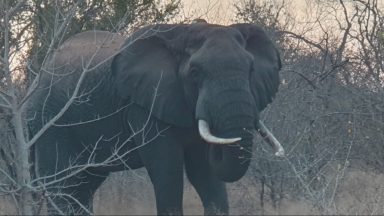The vegetarians of the animal world, or herbivores as they are more commonly known, tend to be primarily grazers and browsers. Grazers eat grass and other herbaceous plants, while browsers eat different parts of woody vegetation, so their mouths have adapted to nibble specific types of vegetation. The black rhino, for example, has a pointed upper lip, useful for plucking leaves and fruit from branches and eating longer grasses. On the other hand, white rhino are square-lipped, eating like lawnmowers and preferring shorter grass.
Due to their eating habits, large herbivores like elephant and herds of grazers like zebra have a huge impact on the environment. They can influence the spread of species, with seeds being distributed in their dung along migration routes, so helping to improve the diversity of flora. Mass migrations of herbivores – in the endless search for food and water – is now thought to be vital too, the trampling of thousands of hooves or feet impacting vegetation growth.
Unfussy eaters like zebra that eat a wide variety of different grasses, sometimes even eating leaves and young trees, can roam more widely than many other species, often venturing into woodlands. They are considered to be “pioneer grazers” — preparing plains for more specialised grazers who rely on short, nutritional grasses. Without these herbivores a process called succession takes place, with taller, more competitive plants replacing others over time, usually trees. So, areas can eventually become more forested and closed in, which can then limit foraging areas.
Herbivores also help balance ecosystems by opening trails and creating space for other, smaller animals to move around. By nibbling the tops of saplings, animals such as impala and puku can keep the landscape open, which also aids predators to hunt.
After many successful translocations, there are now hundreds of zebra in Zambia’s Simalaha Community Conservancy, large towers of giraffe now roam in Mozambique’s Maputo Special Reserve and the ancient migration corridors of elephants are gradually being restored. This all helps to rebuild struggling ecosystems and, as systems rejuvenate, it is more able to sustain both human and animal life.

